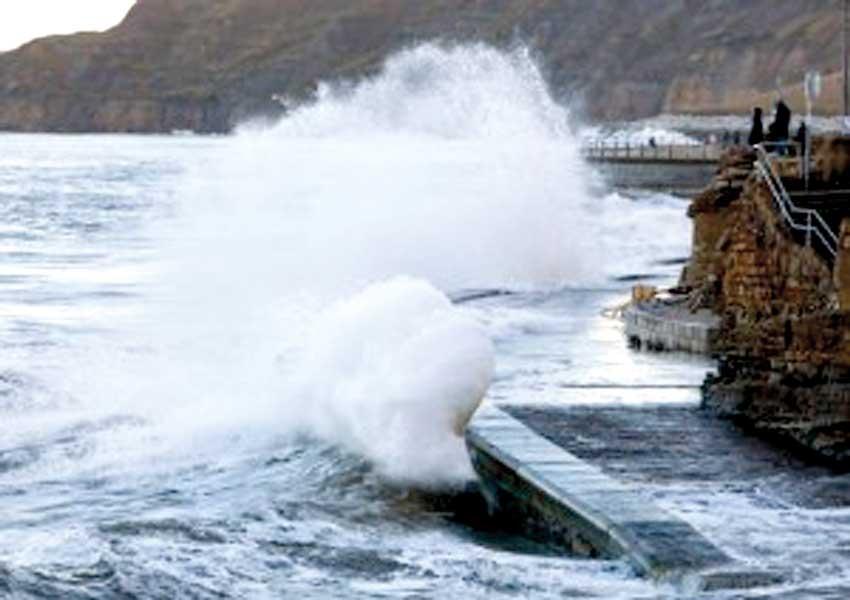26 Jun 2021 - {{hitsCtrl.values.hits}}

The combination of sea level rise, tides, storm surge and waves has increased the overtopping of natural and artificial coastal protection by nearly 50% in the last two decades. This revelation comes from an international study by IRD (France), IHE Delft and Deltares in collaboration with several other international partners. The study was published today in the prestigious scientific journal Nature Communications.
 By combining satellite data and digital models, the researchers have shown that coastal overtopping, and consequently the risk of flooding, is set to further accelerate over the 21st century, by up to 50-fold under a high emission global warming scenario, especially in the tropics. This increase is principally caused by a combination of sea level rise and ocean waves.
By combining satellite data and digital models, the researchers have shown that coastal overtopping, and consequently the risk of flooding, is set to further accelerate over the 21st century, by up to 50-fold under a high emission global warming scenario, especially in the tropics. This increase is principally caused by a combination of sea level rise and ocean waves.
Low-lying coastal regions host nearly 10% of the world’s population. In addition to ongoing erosion and rising sea levels, these areas and their unique ecosystems are facing destructive hazards, including episodic flooding due to overtopping of natural/artificial protection, as in the case of Hurricane Katrina, which hit the United States in 2005, Cyclone Xynthia in Europe in 2010, and Typhoon Haiyan in Asia in 2013 (the largest tropical cyclone ever measured). These episodic events are expected to become more severe and more frequent due to global warming, while the consequences will also increase due to increased anthropogenic pressure, such as coastal and infrastructure development, rapid urbanisation. Although the magnitude and frequency of these events remain uncertain, scientists believe that countries in the tropics will be particularly affected.
Despite the significant role ocean waves play in determining coastal sea levels, their contribution to coastal flooding had previously been largely overlooked, mainly due to a lack of accurate coastal topographic information.
Low-lying coastal regions host nearly 10% of the world’s population. In addition to ongoing erosion and rising sea levels, these areas and their unique ecosystems are facing destructive hazards, including episodic flooding due to overtopping of natural/artificial protection
Measuring past events to estimate future risks
This study combined an unprecedented global digital model for surface elevation with new estimates of the extreme sea levels. These extreme water levels contain tides, analysis of wind-driven waves and existing measurements of natural and artificial coastal defences.
The study started by quantifying the increase in global submersion events that occurred between 1993 and 2015. To accomplish this, satellite data was used to define two key parameters for coastal topography: the local beach-slope and maximum subaerial elevation of the coasts. The extreme level of coastal waters was calculated in hourly time steps in order to identify the potential annual number of hours during which coastal defences could be overtopped in each area.
“The combination of tides and episodes of large waves is the main contributor to episodes of coastal overflow,” says Rosh Ranasinghe, Professor of Climate Change impacts and Coastal Risk at IHE Delft and senior specialist at Deltares. “We identified hot-spots, where the increase in risks of overtopping is higher, such as in the Gulf of Mexico, the Southern Mediterranean, West Africa, Madagascar and the Baltic Sea.”
Acceleration during the 21st century
The scientists also performed an initial global assessment of the potential coastal overtopping over the 21st century, by taking into account different sea-level rise scenarios. Results show that the number of overtopping hours could increase with a faster pace than the average rate of sea-level rise. “The frequency of overtopping is accelerating rapidly and will be clearly perceptible as early as 2050, regardless of the climate scenario. By the end of the century, the intensity of the acceleration will depend on the future trajectories of greenhouse gas emissions and therefore the rise in sea-level. In the case of a high emissions scenario, the number of overtopping hours globally could increase fifty-fold compared with current levels,”
Prof. Ranasinghe warns. “As we move ahead in the 21st century, more and more regions will be exposed to overtopping and consequent coastal flooding, especially in the tropics, north-western United States, Scandinavia, and the Far East of Russia.”
Sri Lankan born Prof. Dr. Roshanka (Rosh) Ranasinghe holds the AXA Chair in Climate Change Impacts and Coastal Risk at IHE Delft and is the Head of the Department of Coastal & Urban Risk & Resilience IHE Delft (The Netherlands). At Deltares (Delft, The Netherlands), which is the Dutch National Water Laboratory, he functions as Senior Specialist (Hydraulic Engineering). Rosh is also an advisor to the Marine Environment Protection Authority of Sri Lanka
Courtesy- Deltares
29 Nov 2024 12 minute ago
29 Nov 2024 33 minute ago
29 Nov 2024 2 hours ago
29 Nov 2024 2 hours ago
29 Nov 2024 3 hours ago